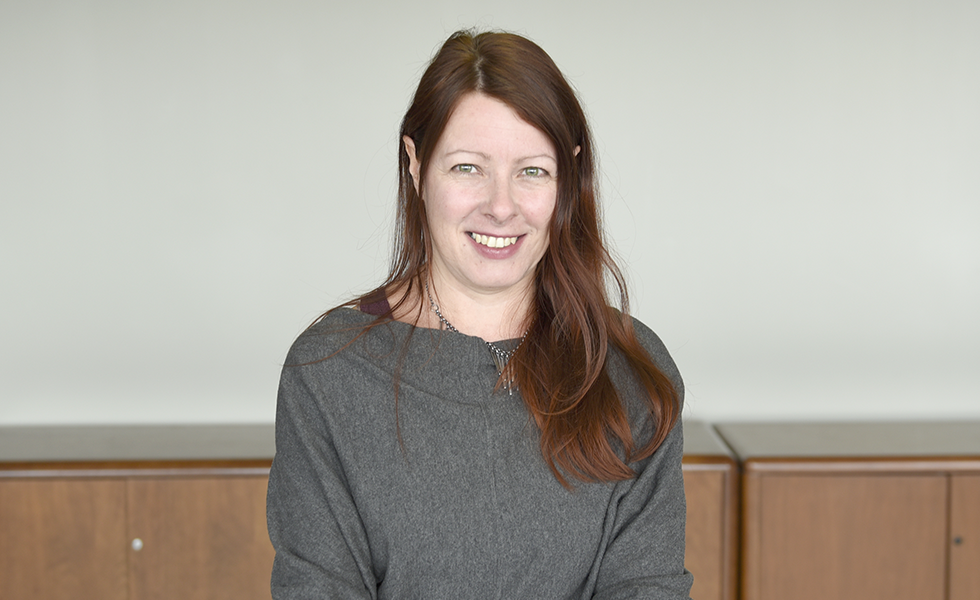
June is ALS Awareness Month. Lou Gehrig's disease, also termed Amyotrophic Lateral Sclerosis (ALS), is a condition that shows no mercy. It gradually paralyzes people because the brain is no longer able to communicate with the muscles of the body. There is no cure for ALS and very few treatment options exist for the majority of people living with the disease. Approximately 80 per cent of people with ALS die within two to five years of being diagnosed.
- More than 200,000 people around the world are living with ALS.
- An estimated 3,000 Canadians are currently living with ALS.
- Each year approximately 1,000 Canadians die from ALS. A similar number of Canadians are diagnosed with ALS each year.
- 80% of people with ALS die within 2-5 years of diagnosis.
Source: ALS Canada
These stark facts show why all hopes for future treatments rest on research such as the one conducted in Dr. Marlene Oeffinger’s lab at the IRCM.
She took the time to explain one of her two research projects in that field, but first, here is how she came to work on ALS.
Inspired by a Musician
While I have worked on RNA and ribosomes for more than two decades, my lab only started working on understanding the mechanisms behind ALS five or six years ago. It was inspired by a previous post-doctoral researcher of mine, Daniel Scott, now an Assistant Teaching Professor at the University of Missouri-Kansas-City, who, played the double bass and was a great admirer of Charles Mingus, the American jazz double bassist.
Charles Mingus was diagnosed with ALS in the mid-70s and while he stopped playing music because of it, he kept composing music until his death in 1979. Holding great admiration for Mingus, while in my lab, Dan felt compelled to learn more about the disease and to contribute to finding a cure for it through research. So together, we considered how we could contribute to the field of ALS research using our expertise in RNA, ribosomes, and proteomics. Dan left my laboratory in 2018, but our research on ALS continued, now spearheaded by my postdoctoral researcher Ulises Rodriguez Corona, who also received a prestigious Brain-Canada Postdoctoral Fellowship in 2019. - Dre Marlene Oeffinger
An Elusive Disease
Many molecular aspects of ALS are still elusive, explains Dr. Oeffinger. It is a multifactorial disease, which means it involves and is often dependent on several causes inside the cells, that come together to create a molecular environment that leads to the disease.
This is why understanding this important research brings Dr. Oeffinger’s team to dive into the microscopic world of the cell. A protein identified as a key contributor to ALS is TDP-43, a protein usually present in the cell nucleus, a cellular subcompartment where our genetic information encoded in DNA is stored. That is where the DNA is read and copied into RNA which, later on, is converted into proteins in a different cellular subcompartment called the cytoplasm. In the nucleus, TDP-43's role is to prepare the RNA for this very process.
However, in many cases of ALS, TDP-43 itself is wrongly localized to the cytoplasm, which causes it to take on different functions. These adapted functions are known to be involved in the development and progression of ALS. It is these 'adaptive' functions of mislocalized TDP-43 that we are interested in understanding and how they contribute to ALS.
Like most researchers working on this terrible disease, Dr. Oerffinger’s main goal is to identify new therapeutic targets and markers for early diagnostics. In this effort, she focuses primarily on the interaction of TDP-43 with ribosomes, a structure also found in cells.
The ribosomes are common to all organisms; they are essential for life. They are the site of protein synthesis that exist in all cells and are responsible for converting genetic information into different types of proteins in order to respond to cells needs, tissue identity or developmental state. This process is fundamental to ensure the body’s proper development and functions. Unfortunately, through certain circumstances, the flexibility of ribosomes also can also create aberrations, which can imbalance the processes and lead to diseases.
It has been shown by us and other researchers that some of the mislocalized cytoplasmic TDP-43 is associated with ribosomes.
In fact, Dr. Oeffinger’s recent work shows that this association changes the complement of proteins produced by TDP-43 carrying ribosomes. Also, in that case, the protein production involved in ALS and other neurodegenerative diseases is clearly increased.
So, the questions we are faced with are first: how does this happen? And second: is there something else on these ribosomes that changes here – other than TDP-43 – something that we could potentially use as a marker and target to divert protein production away from ALS-causative proteins? At least, that is our hope and what we are working towards. For that, however, we really need to understand the parts working together in these pathogenically adapted ribosomes and how exactly they facilitate the production of harmful proteins that fuel disease progression.
The IRCM Community thanks Dr. Oeffinger and her team, for this important work, which gives hope for future treatments!



